Filter by

Theory and description in African linguistics
The papers in this volume were presented at the 47th Annual Conference on African Linguistics at UC Berkeley in 2016. The papers offer new descriptions of African languages and propose novel theoretical analyses of them. The contributions span topics in phonetics, phonology, syntax, semantics, and pragmatics and reflect the typological and genetic diversity of languages in Africa. Four papers i…
- Edition
- -
- ISBN/ISSN
- 9783961102068
- Collation
- -
- Series Title
- Contemporary African Linguistics
- Call Number
- 410 CLE t
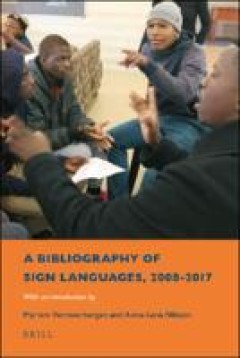
A bibliography of sign languages
This concise bibliography on Sign Languages was compiled on the occasion of the 20th international Congress of Linguists in Cape Town, South Africa, in July 2018. The selection of titles is drawn from the Linguistic Bibliography and gives an overview of scholarship on Sign language over the past 10 years. The introduction is by Myriam Vermeerbergen (KU Leuven & Stellenbosch University) and Anna…
- Edition
- -
- ISBN/ISSN
- 9789004376632
- Collation
- xxxviii, 148p.
- Series Title
- -
- Call Number
- 410 BIB b

Key concepts in philosophy: an introduction
The book provides an introduction to six fundamental philosophy concepts - philosophy, language, knowledge, truth, being and good. At the same time, it aims to initiate its readers into the process of philosophical thinking. The book is addressed to students and laypeople, but also contains new ideas for specialists. It is written in a clear, accessible and engaging style, and its author "share…
- Edition
- -
- ISBN/ISSN
- 9783896656483
- Collation
- 1 online resource (242 pages)
- Series Title
- -
- Call Number
- 100 FER k
Eyetracking and applied linguistics
Eyetracking has become a powerful tool in scientific research and has finally found its way into disciplines such as applied linguistics and translation studies, paving the way for new insights and challenges in these fields. The aim of the first International Conference on Eyetracking and Applied Linguistics (ICEAL) was to bring together researchers who use eyetracking to empirically answer th…
- Edition
- -
- ISBN/ISSN
- 9783946234654
- Collation
- iv, 192 p.; 22 cm.
- Series Title
- -
- Call Number
- 418 EYE e
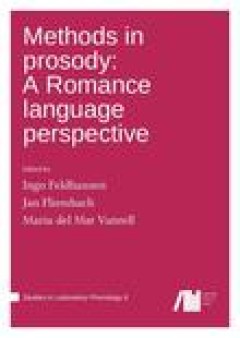
Methods in prosody : a romance language perspective
This book presents a collection of pioneering papers reflecting current methods in prosody research with a focus on Romance languages. The rapid expansion of the field of prosody research in the last decades has given rise to a proliferation of methods that has left little room for the critical assessment of these methods. The aim of this volume is to bridge this gap by embracing original contr…
- Edition
- -
- ISBN/ISSN
- 9783961101054
- Collation
- -
- Series Title
- Studies in Laboratory Phonology
- Call Number
- 414.6 MET m
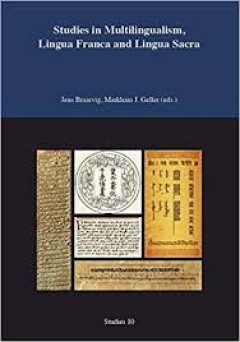
Studies in multilingualism, lingua Franca and Lingua sacra
The present book comprises a number of studies centered around the topic of how knowledge diffuses from one culture to another, and how knowledge diffusion is connected with the spread of languages and the conceptual systems they carry by translation. This diffusion also takes place also over linguistic borders, in the way that a given receiving language may also absorb systems of knowledge fro…
- Edition
- -
- ISBN/ISSN
- 9783945561133
- Collation
- -
- Series Title
- -
- Call Number
- 404.209 STU s
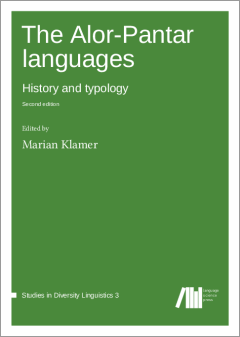
The Alor-Pantar languages: history and typology. Second edition.
The Alor-Pantar family constitutes the westernmost outlier group of Papuan (Non-Austronesian) languages. Its twenty or so languages are spoken on the islands of Alor and Pantar, located just north of Timor, in eastern Indonesia. Together with the Papuan languages of Timor, they make up the Timor-Alor-Pantar family. The languages average 5,000 speakers and are under pressure from the local Mala…
- Edition
- 2nd Edition
- ISBN/ISSN
- 9783961100224
- Collation
- 509 p.; 23 cm.
- Series Title
- -
- Call Number
- 499.12 KLA a

Language-learner computer interactions : theory, methodology and CALL applica…
This book focuses on learner-computer interactions (LCI) in second language learning environments drawing largely on sociocultural theories of language development. It brings together a rich and varied range of theoretical discussions and applications in order to illustrate the way in which LCI can enrich our comprehension of technology-mediated communication, hence enhancing learners’ digita…
- Edition
- -
- ISBN/ISSN
- 9789027266989
- Collation
- xv, 257p. : ill.
- Series Title
- -
- Call Number
- 418.00785 LAN l
Uncertainty in deliberate lexical interventions: Exploring Esperanto speakers…
Language managers in their different forms (language planners, terminologists, professional neologists …) have long tried to intervene in the lexical usage of speakers, with various degrees of success: Some of their lexical items (partly) penetrate language use, others do not. Based on electronic networks of practice of the Esperanto speech community, Mélanie Maradan establishes the foundati…
- Edition
- -
- ISBN/ISSN
- 9783732992379
- Collation
- 373p.: ill.
- Series Title
- -
- Call Number
- 414 MAR u
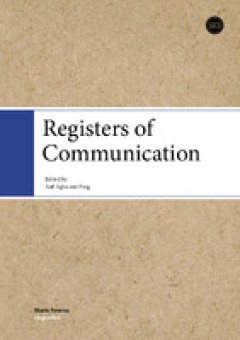
Registers of communication
In any society, communicative activities are organized into models of conduct that differentiate specific social practices from each other and enable people to communicate with each other in ways distinctive to those practices. The articles in this volume investigate a series of locale-specific models of communicative conduct, or registers of communication, through which persons organize their …
- Edition
- -
- ISBN/ISSN
- 9789522227980
- Collation
- 344 p.; 22 cm.
- Series Title
- Studia Fennica Linguistica, 18
- Call Number
- 306.44 REG r
 Computer Science, Information & General Works
Computer Science, Information & General Works  Philosophy & Psychology
Philosophy & Psychology  Religion
Religion  Social Sciences
Social Sciences  Language
Language  Pure Science
Pure Science  Applied Sciences
Applied Sciences  Art & Recreation
Art & Recreation  Literature
Literature  History & Geography
History & Geography